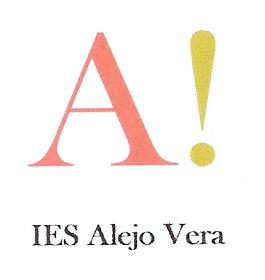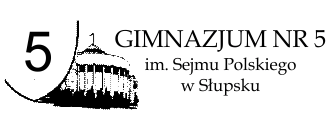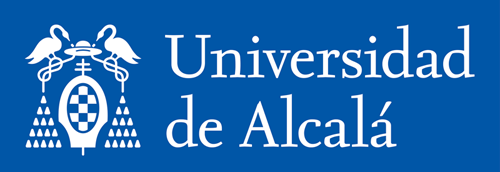INTRODUCTION
The right to claim asylum is in international law and reference should be made to three essential pieces of international law: 1) 1951 Geneva Convention Relating to the Status of Refugees, 2) 1950 European Convention on Human Rights (ECHR) and 3) European Union Asylum Qualification Directive. Governments are obliged to provide protection to people who meet the criteria for asylum but the process to determine whether the criteria to have asylum are met is quite complex. We can illustrate with an example of how to show “a well-founded fear of persecution”, necessary to comply to the 1951 Geneva Convention. “This definition is forward-looking, so even if an asylum seeker has suffered terrible harm in the past, they will not get asylum if there is no risk of anything happening to them in the future”, (www.asylumaid.org.uk). On this same website we learn what should be demonstrated:
- the harmful treatment the person fears amounts to ‘persecution’
- the person’s fear of such persecution is ‘well-founded’
- the persecution is for one of the five reasons specified in the Convention
- the person could not find protection in another part of their country and the person would be at risk of experiencing such persecution in the future if they were returned
In addition to the evidence submitted by the asylum applicant, case owners take into account other information such as sources of information on the political and human rights situation in the person’s country of origin, and previous legal decisions about asylum that have been made in UK courts (case law).
Due to difficulties to prove these requirements, legal advice is crucial in order for asylum seekers to support their claims. A resource worth quoting is an annotated bibliography of legal and social sciences research sources related to refugee claims based on sexual orientation and gender identity (Kapron and La Violette, 2014). It contains (1) scholarly publications on LGBT refugees and asylum-seekers and the refugee determination process and (2) reports from international, inter-governmental and non-governmental organizations on the same topic. Interesting to read information on how LGB should identify themselves to gain asylum (p. 8) and advice on the importance of using human rights standards to determine which infringements on activities constitute serious violations of core rights (p. 9). More research on legal problems can be found in Bieksa (2011), Kasa (2015).
If the claim for asylum is allowed, the applicant gets the Refugee Status, which lasts for five years. This status can be revised during this time if there is good reason, for instance, if the circumstances in the country of origin change. After five years, if it is still unsafe for the person to return to their own country, they will be able to apply for a different legal status granting indefinite leave to remain.
Once asylum is granted, we would like to hear that refugees have an easier life but it is sad to know that apart from having to find their place in the new society, refugees may be rejected by migrant individuals of their own nationality. We can read about this in Homopoly Newsetter, as part of a report on what several refugees shared at the Conference Genderdiversity & Homosexuality, (2017, NHL-STENDEN Highschool, Leeuwarden, the Netherlands): “When some of them arrived in the asylum they got bullied by other migrants and in one case stabbed because someone found out he was a homosexual”. An Iranian migrant reported that he was granted asylum “but was deeply saddened by the fact his choice had had a major negative influence on his family back in Iran and suffered extreme bullying from other families”. Interesting also to learn the story of Tofik Dibi, of Moroccan descent, who was elected as a Member of Dutch Parliament in 2006 and struggled with coming out in order to protect his family. He tells his personal story in Djinn, his autobiographical novel.
These stories put into perspective the tremendous difficulties that LGB refugees must experience. Being newcomers to a safe country they must adapt to that new country while most probably facing lack of understanding by their friends and families in their origin countries plus lack of understanding by other migrants in the host country. This means that the sought for freedom to come out may be hindered while the comfort and support often shared among migrants may be missing for LGB individuals. These difficulties will have an important limiting effect as they cannot express freely. “The body is active, expressive, and sensual”, Fobear (2016, p. 34), therefore, a body that cannot express sexual identity is seriously limited. Several authors have explored how we experience the world and become involved with it through our body and multiple corporeal and sensual practices, (de Certeau, 2000; MacNaughten and Urry, 2000), quoted in Fobear (2016, p. 34). For Merleau-Ponty (1968), also quoted in Fobear (2016, p. 34), “the body is not an inanimate thing, but a sensory and physiological entity that inhabits and haunts space. Only through the body do we have access to space, and spaces are embodied”.
Upon these considerations, we can imagine the struggle for LGB refugees to find a sense of belonging in a foreign place, having to hide their sexual orientation and gender identity. Research needs to be done in this field. A search for studies on LGB refugees throws some examples referring to Canada, US and UK but there is lack of studies on the situation in European countries. Participatory photography emerges as an interesting medium of communication helping participants reflect on and illustrate their past, present, and future desires, feelings, and lived realities around home and belonging. Several researchers are using this medium (Fobear, 2016; Sirriyeh, 2010; Clark-Ibáñez, 2004; Andrew Irving, 2007). Fobear (2016, p. 34-35) argues that “a focus on the body provides a nuanced and necessary understanding of the lived experience of LGBT refugee migration and settlement”.
From what has been said we can conclude how important it is to give support to LGB asylum seekers and refugees. In the context of education, it is very important that teachers and trainee teachers learn to develop inclusive classrooms. A search for organizations offering such support throws the existence of Rainbow Refugee Assistance Project (RFAP) in Canada, started as a charity in Vancouver, Canada in 2000 and Rainbow Railroad, started also as a charity in Canada in 2006. In the US we can find initiatives such as the gay center https://gaycenter.org/about, which aims at empowering LGBT people, building a strong community.
DISCUSSION QUESTIONS
At the following link you will find three stories of homosexuals who have fled their countries of origin: https://youtu.be/p500h-1ihCc
Make a list of all the things they had to leave behind and the difficulties they had to face in the emotional and material. What would be harder for you? Rank the difficulties from most to least difficult.
In the following video you can listen to advice on how to apply for refugee status if you are LGBT: https://youtu.be/MemilTr4icU
Discuss different circumstances and difficulties depending on the country you are from.
After watching the videos, try writing a script for an interview by an officer to an immigrant seeking for refugee status and role play the interview.
STORIES
- Three stories of homosexuals who have fled their countries of origin: https://youtu.be/p500h-1ihCc
- Advice on how to apply for refugee status if you are LGBT: https://youtu.be/MemilTr4icU
RESOURCES
- Bieksa, L. (2011). “The refugee qualification problems in LGBT asylum cases”. Jurisprudencija, 18(4).
- Fobear, K. (2016). Nesting bodies: Exploration of the body and embodiment in LGBT refugee oral history and participatory photography. Social Alternatives, 35(3), 33-43. Retrieved May 6, 2018 from https://search.proquest.com/docview/1868510484?accountid=14475
- Kapron, M. and N. La Violette (2014) Refugee Claims Based on Sexual Orientation and Gender Identity: An Annotated Bibliography. Ottawa Faculty of Law Working PaperNo. 2014-15. Retrieved May 6, 2018 from https://papers.ssrn.com/sol3/papers.cfm?abstract_id=2457503
- Kasa, I. (2015). “LGBT in the context of refuge international protection”. Pravozaŝitnik (Moskva), (2/2015), 5-5.
- Homopoly Newsletter, 2017, 3.
- Rainbow Refugee Assistance Project (RFAP): Retrieved May 6, 2018 from http://www.canadianvisareview.com/uncategorized/5487 and https://www.rainbowrefugee.com/
- Rainbow Railroad Retrieved May 6, 2018 from https://www.rainbowrailroad.ca/about-us














